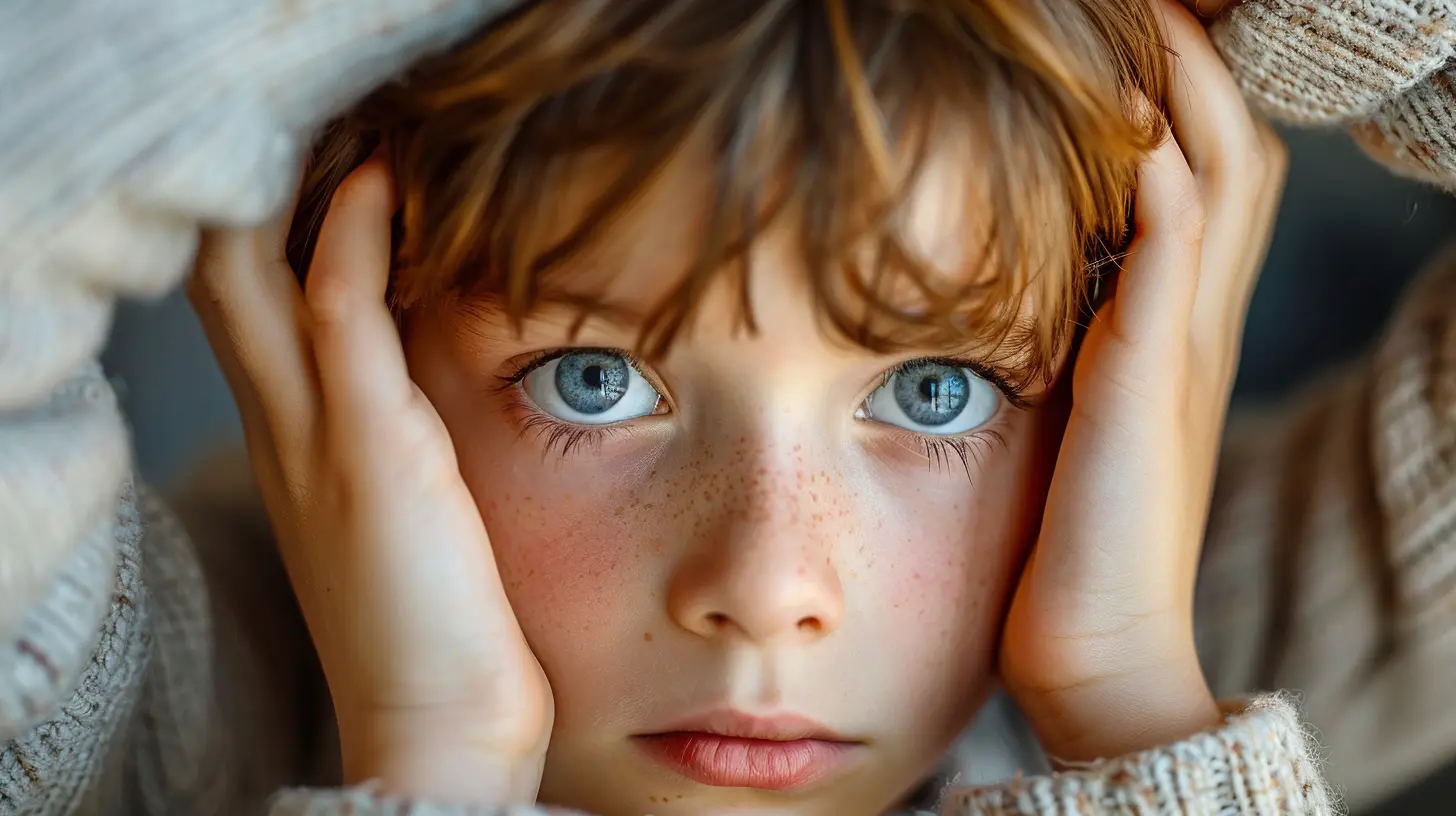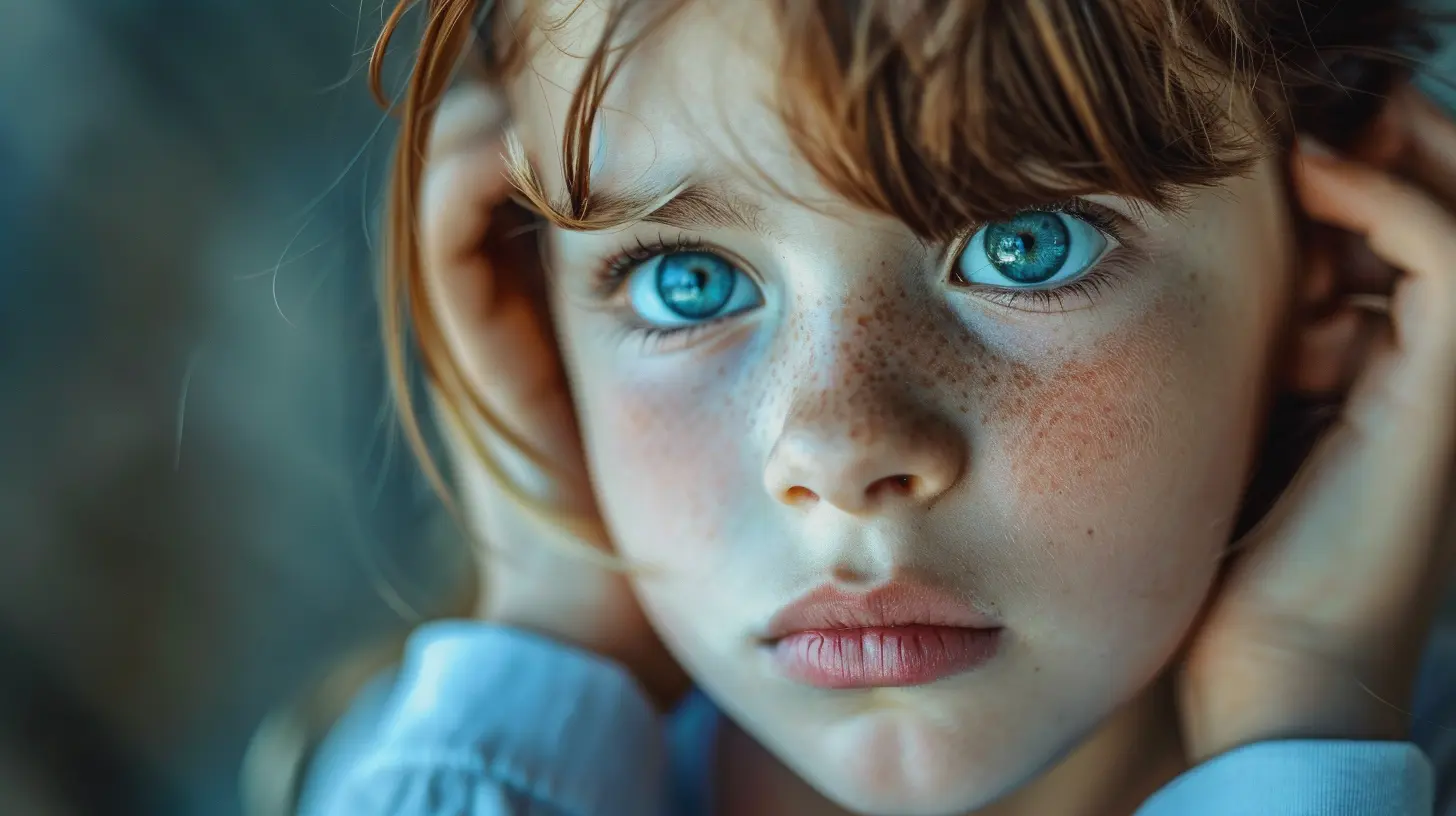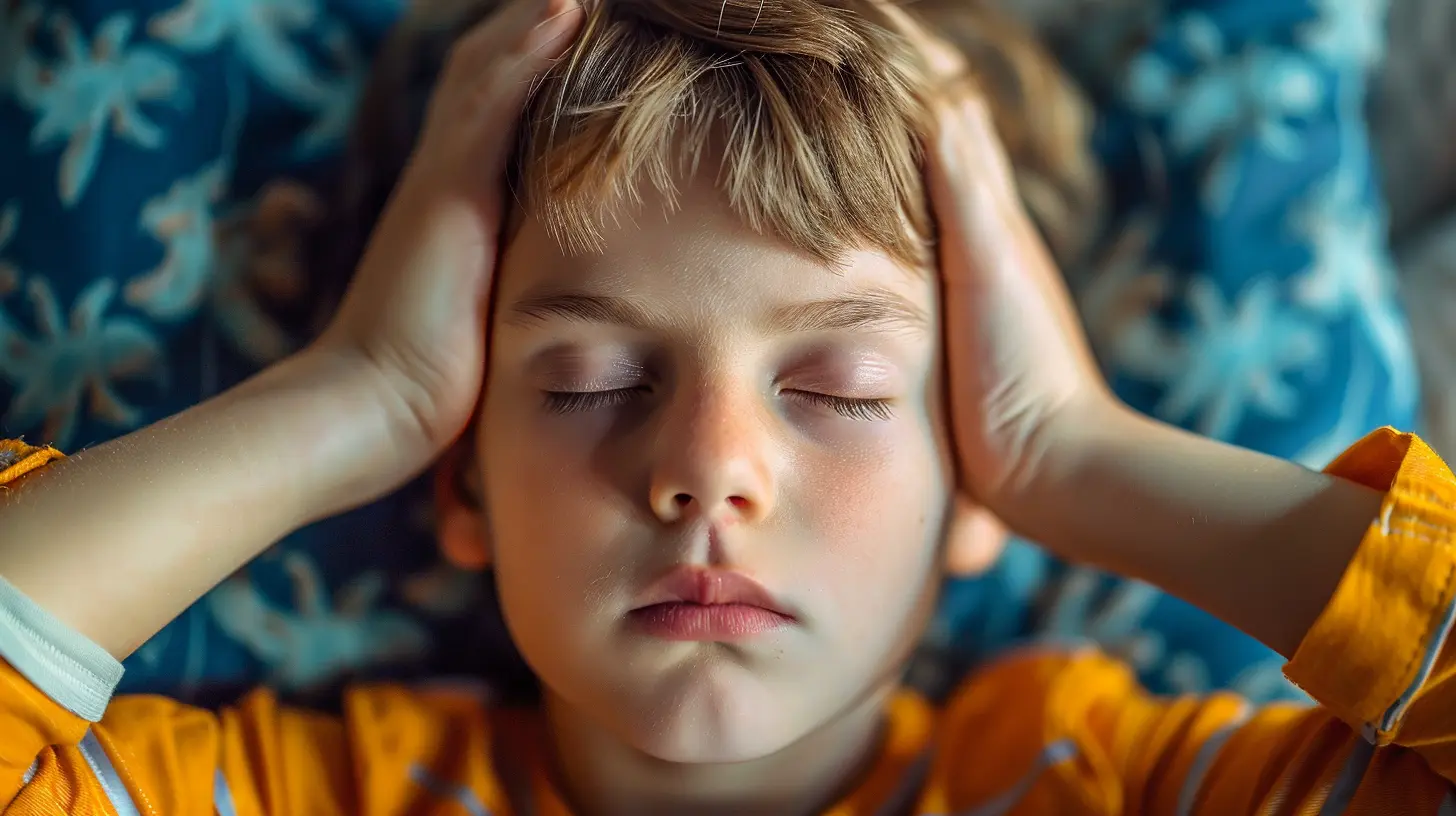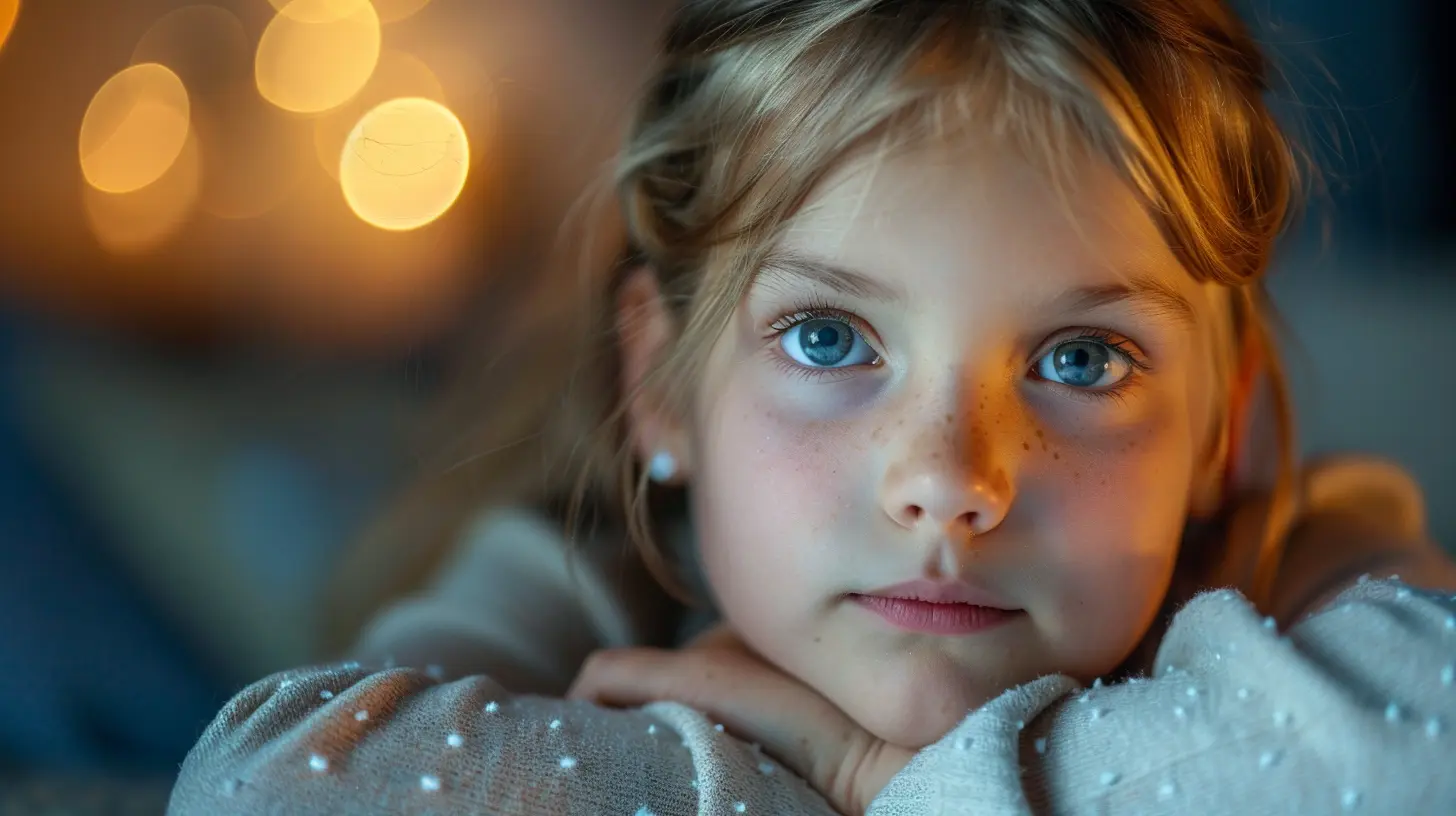Understanding and Managing Childhood Migraines
28 October 2025
Let’s get real for a second—watching a child suffer from migraines is like trying to solve a Rubik’s cube blindfolded... while riding a unicycle... on a tightrope. Painful for them, stressful for you, and frustrating for everyone involved.
If you’ve ever had a migraine yourself, you know it’s not “just a headache.” Now imagine being a tiny human with a developing brain trying to understand why there’s a marching band in your skull playing cymbals at full volume. Yep—childhood migraines are a whole different beast.
But don’t panic. Grab a cup of coffee (or tea, no judgments), and let’s break this whole migraine thing down—what causes them, how to spot them, and most importantly, how to help your little one out.
What Exactly Is a Childhood Migraine?
Alright, let’s start with the basics. A childhood migraine is not just a pint-sized version of an adult migraine. Nope, these things are sneaky, and they like to play by their own rules.Migraine in kids can look completely different from what adults experience. While adults often deal with pounding headaches that last for hours (or days, ugh), kids might just feel queasy, act like a grump, or even have a tummy ache!
Typical Symptoms in Kids
Let’s play a game called: “Is it a migraine or just a bad day?” Here are some classic signs your child might be dealing with a migraine:- Pulsating headache (usually on both sides, unlike adults)
- Nausea and vomiting
- Sensitivity to light and sound (“Why is the sun so bright today?!”)
- Pale skin
- Mood changes (a.k.a. why they just screamed because the toast was cut the wrong way)
- Abdominal pain
And here's the kicker: migraines in kids can be short-lived, sometimes as brief as two hours! That’s whiplash compared to the adult version. But just because it's shorter doesn’t mean it's easier.
Causes: What Triggers These Mini Brain Storms?
Ah, triggers. The ultimate migraine party crashers. In kids, these can range from “totally understandable” to “are you kidding me?”Common Childhood Migraine Triggers:
- Stress – School drama? Boom, migraine. Soccer tryouts? Another one.- Sleep issues – Too little or too much sleep can throw their brain into a tantrum.
- Dehydration – Spoiler alert: kids forget to drink water like it’s an Olympic sport.
- Skipping meals – That one skipped breakfast = migraine city.
- Bright lights or loud noises – Welcome to trigger central.
- Hormonal changes – Especially in pre-teens and teens.
- Weather changes – Yes, even Mother Nature gets a vote.
Honestly, anything from a late bedtime to a pop quiz can be the final straw.
Diagnosing Childhood Migraines: Sherlock Time
Diagnosing migraines in kids is basically a game of dot-to-dot, and your child’s doctor plays the lead detective. Unfortunately, there's no “migraine blood test,” which would be SO helpful, right?What You Can Expect at the Doctor:
- A detailed family history (because migraines love to run in families)- Questions about symptoms and triggers
- Possibly a headache diary (more on that in a bit)
- Neurological exams to rule out other scary stuff
Sometimes docs will order MRIs or CT scans just to make sure there’s nothing funky going on in the brain. But if everything looks fine and your child matches up with the migraine criteria, then bingo—we have a diagnosis.
Migraine Types in Kids: Because One Isn’t Enough
Did you think migraines came in one flavor? Oh no. This is the Baskin-Robbins of headaches.The Most Common Types:
- Migraine without aura – Most common. Think headache, nausea, and light/sound sensitivity.- Migraine with aura – Adds in visual disturbances, like zigzag lines or sparkles.
- Abdominal migraine – No headache, just tummy pain, maybe some nausea. Tricky little sucker.
- Cyclic vomiting syndrome (CVS) – Repeated episodes of vomiting that come and go like a bad Netflix series.
Understanding which type your kid has helps guide treatment, so don’t skip this part!
Helping Your Child Cope: It's Not Just About Pills
Okay, so now you’ve got a diagnosis. Time to slay the migraine dragon! But here’s the truth: medication is just one tool in your parenting superhero belt.Lifestyle Tweaks That Actually Work
Think of this as building your child’s anti-migraine fortress.1. Sleep Like a Boss
Regular bedtimes = a happier brain. Don’t underestimate the power of a consistent sleep schedule. Weekend sleep-ins? Not your friend.2. Hydrate Like It’s Your Job
Get your kid to drink water regularly. Add a fun water bottle, or tell them it’s magic brain juice—whatever works.3. Snack for Survival
No skipping meals. Hangry = Headachy. Keep healthy snacks handy, like nuts or fruit.4. Stress Less (Easier Said Than Done, Right?)
Teach them simple relaxation techniques. Deep breathing, stretching, doodling, or dancing like a maniac—it all helps.5. Screen Time Limits
Yes, we’re talking video games, too. Eye strain and exposure to light can be a huge trigger.Medications: When You Need the Big Guns
Let’s talk about meds—but think of them as Plan B, not Plan A.Acute Treatment (When Migraine Attacks Strike)
- Ibuprofen or acetaminophen – The usual go-to, IF given early.- Triptans – These are prescription meds your doc might recommend. Not for all kids, though.
Preventative Medications
If your child is having migraines more often than their TikTok app updates, your doc might suggest daily meds to prevent them—like certain antihistamines, anti-seizure meds, or even beta-blockers.Always talk with your pediatrician or a pediatric neurologist. Never play pharmacist at home!
Alternative and Natural Remedies: Crunchy, But Sometimes Clever
If you’re more into the crunchy, granola-mom route (no judgment—we see you!), there are some complementary options too.Popular Natural Migraine Helpers:
- Magnesium supplements – Some kids with migraines have low magnesium levels.- Riboflavin (Vitamin B2) – Might help if used consistently.
- Butterbur and Feverfew – Herbal remedies, but be cautious and talk to your doc.
- Biofeedback therapy – Helps kids control body functions like heart rate and muscle tension through relaxation techniques.
Spoiler alert: what works for one kid may do nada for another. Keep trying until you find your migraine-fighting combo.
The Power of a Migraine Diary (Yes, It’s a Thing)
Keeping a migraine diary can be a total game-changer. Think of it as your field notes while hunting the elusive migraine monster.Write down:
- When the migraine started
- What your kid ate that day
- How much sleep they got
- Any big events or stressors
- Weather changes
- How long it lasted and what helped
Over time, patterns pop out like bread from a toaster. Boom—helpful insights!
Talking to Teachers (AKA Your Child’s Migraine Ally)
Let’s be honest—teachers can’t read minds. If your child is struggling with migraines, fill them in.Here’s what to tell them:
- Your child’s typical symptoms
- What might trigger an attack at school
- What helps them feel better
- When they should call you
Some schools even offer 504 plans or accommodations, like allowing rest breaks or avoiding certain triggers. It's worth chatting with the school nurse too, FYI.
When to Worry (Because Parents Are Pros at That)
Most migraines aren’t dangerous, but let’s not sugarcoat it—there are red flags.Call your doctor if:
- The headache is sudden and super severe
- There’s loss of consciousness
- Weird symptoms like difficulty speaking, vision loss, or weakness
- It's the first-ever migraine
- The migraine lasts over 72 hours
When in doubt? Always call. You’re not overreacting—you’re advocating.
Growing Out of Migraines: Yay or Nay?
Here’s some good news to sprinkle on your anxiety sundae: many kids do grow out of migraines. It’s like a terrible roommate that eventually moves out when they hit adulthood.For some, migraines come less often or disappear altogether. For others, they morph into the adult variety. (Sorry in advance.)
Either way, with the right tools, your child can live a full, happy, and relatively headache-free life. You’ve got this—and so do they.
Final Thoughts: You’re Not Alone in This
Managing childhood migraines is a marathon, not a sprint. You’ll have days where you feel like a superhero and others where you want to hide under the kitchen table. It’s okay. You're doing an amazing job.Just remember:
- Track those triggers
- Stick to healthy habits
- Talk to your child and their care team
- And laugh when you can—because laughter really is the best (non-prescription) medicine.
Let’s kick those migraines to the curb—together.
all images in this post were generated using AI tools
Category:
Pediatric HealthAuthor:

Arthur McKeever
Discussion
rate this article
1 comments
Astrid McKenzie
This article does a great job highlighting the complexities of childhood migraines. It’s crucial for parents to recognize symptoms early and seek proper management strategies. Understanding triggers can empower families to improve their child’s quality of life significantly.
October 30, 2025 at 3:58 AM


